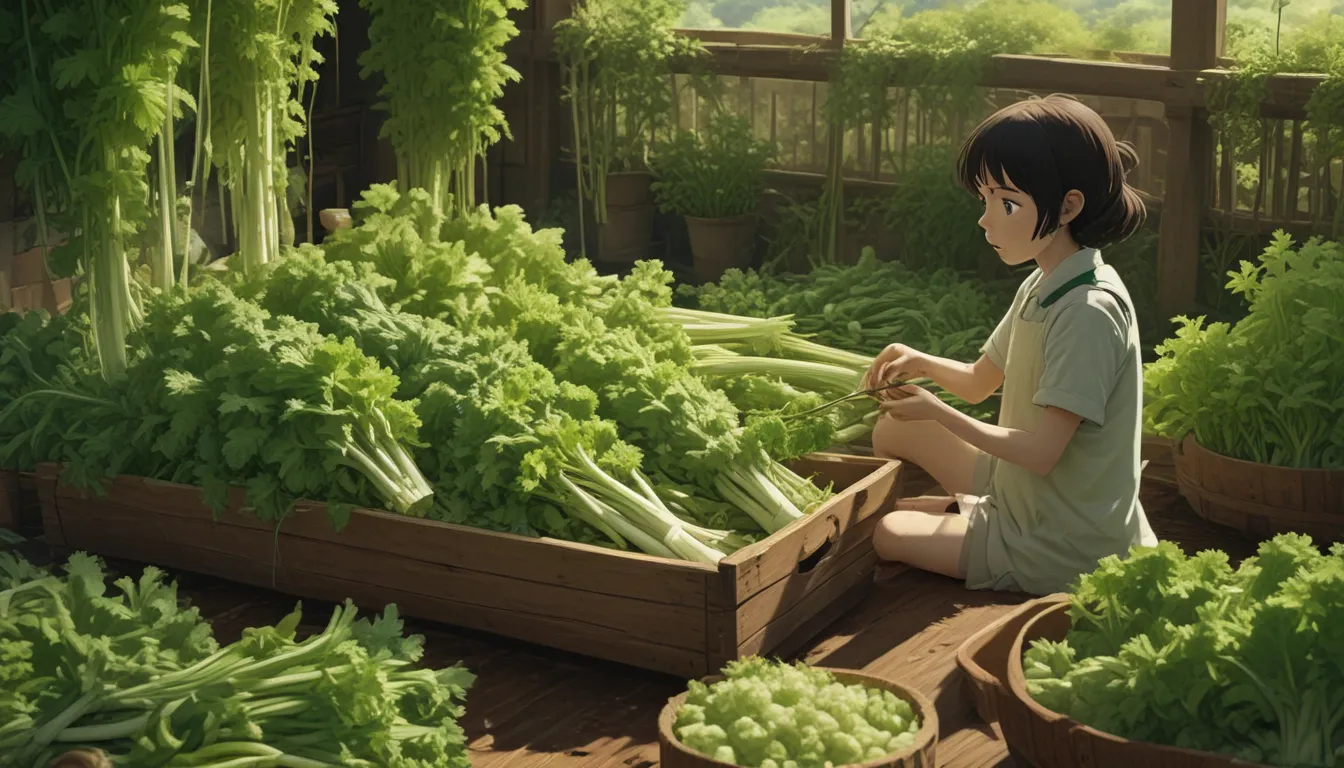Ultimate Guide: When and How to Harvest Celery – A Flavorful Journey from Garden to Plate

It’s that time of year when your celery plants have been flourishing, their aromatic leaves waving in the breeze. The temptation to harvest them and enjoy the crisp, flavorful stalks is irresistible. But are they truly ready to be plucked and transformed into a tasty snack or meal? And if they are, how should you go about the harvesting process?
In this comprehensive guide, we will explore the ins and outs of harvesting celery, from determining the perfect timing to storing your bounty and cooking up delicious recipes. By the end, you will be equipped with the knowledge and skills needed to make the most of your homegrown celery harvest.
What You’ll Discover
- When to Harvest Celery
- How to Harvest Celery
- Storing Your Celery
- Recipes and Cooking Ideas
When to Harvest Celery
Determining the optimal time for harvesting your celery can be a bit tricky, especially if you haven’t kept meticulous records of when you started your plants. On average, celery takes around 130-140 days to mature. This means that for most spring-planted celery, you can expect to harvest between September and October. If you have fall-planted celery, you may be looking at a winter harvest.
While these timelines serve as general guidelines, the best way to know if your celery is ready for harvest is by measuring the length of the stalks. Aim for stalks that are at least six inches long from the base to the first leaf. Additionally, consider blanching the stalks a week or two before harvesting to mellow out the flavor.
How to Harvest
The beauty of harvesting celery lies in its versatility. You can choose to pluck a few stalks at a time for immediate consumption or remove the entire plant in one go for storing and later use. If you opt for the former, start with the largest, outermost stalks. Use a knife to cut them at the base, and voila! You have a crunchy treat ready for your salad or snack.
For those who prefer to harvest the whole plant, ensure that the base is two to three inches in diameter before making clean cuts at the soil level. Once the plant is free from the ground, wipe off any dirt with a dry cloth, and prepare it for storing or cooking.
Storing Your Celery
Properly storing your celery can help extend its shelf life and preserve its freshness. To store your stalks in the refrigerator, remove the leaves, separate the stalks, and wrap them in damp towels before placing them in plastic bags. This method can keep your celery fresh for up to two weeks.
For longer storage, cut the celery into small pieces and blanch them in boiling water for a minute. Once blanched, transfer the pieces to an ice bath to cool down before draining and drying them. Pack the celery in a freezer bag, label it, and store it in the freezer for up to 18 months.
Recipe and Cooking Ideas
With your freshly harvested celery, the culinary possibilities are endless. Whether you use it in a hearty winter vegetable soup, Thanksgiving stuffing, or as a snack with peanut butter, celery adds a unique crunch and flavor to your dishes.
For a comforting fall meal, pair your celery with cinnamon swirl bread for a delightful combination of flavors. And don’t forget to check out our recipe for Thanksgiving stuffing that features freshly harvested celery for that extra homegrown touch.
The Joy of Harvesting Celery
Harvesting your own celery is a rewarding experience that allows you to savor the flavors of homegrown produce. Whether you choose to harvest stalk by stalk or uproot the entire plant, the process is straightforward and satisfying. And the best part? You get to enjoy the superior taste of freshly harvested celery over store-bought options.
Have you harvested your own celery before? Did you notice a difference in flavor compared to store-bought varieties? Share your stories and questions in the comments below!
Before you go, be sure to explore these articles on growing and caring for celery in your garden:
- How to Grow Celery – Tips for a Bountiful Harvest
- Top Celery Cultivars to Try in Your Garden
- Troubleshooting Guide: Dealing with Bitter Celery Flavor
Thank you for joining us on this flavorful journey from garden to plate. Happy harvesting!





